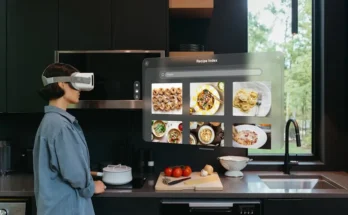In the not-so-distant past, technology was a term reserved for futuristic movies, science labs, or the military. Fast forward to today, and it’s everywhere—from your pocket-sized smartphone to AI managing massive business operations. The evolution has been swift, sometimes overwhelming, yet undoubtedly transformative. In this digital era, understanding modern technologies isn’t just a choice—it’s a necessity.
This article dives deep into the world of contemporary tech, its advantages, its impact on our lives, and most importantly, how we can harness its power for personal, professional, and societal growth.
Understanding Modern Technology:
-
The Digital Backbone of the 21st Century
Modern technology refers to the set of tools, systems, and innovations that have emerged primarily over the past few decades. Think artificial intelligence (AI), machine learning (ML), blockchain, the Internet of Things (IoT), augmented and virtual reality (AR/VR), and 5G networks. These aren’t just buzzwords anymore—they are actively shaping the way we live, work, and interact.
Where once we relied on human intuition and manual processes, today we depend on data, algorithms, and automation. The transition from analog to digital has made the world more connected, efficient, and intelligent.
-
From Simplicity to Complexity
While technology simplifies tasks—like using a GPS to navigate or streaming music on-demand—the systems behind them are growing increasingly complex. The real magic lies in understanding how these innovations work, so we’re not just passive users but informed participants in the digital age.
Major Modern Technologies and Their Advantages:
-
Artificial Intelligence and Machine Learning
AI and ML are perhaps the most transformative technologies of our time. They mimic human intelligence and learn from data to make predictions, decisions, and even create content.
Their benefits are vast:
AI is revolutionizing healthcare by diagnosing diseases with more accuracy. In business, it’s used for customer service through chatbots, predictive analytics, and fraud detection. In everyday life, AI powers voice assistants, recommendation systems on Netflix and YouTube, and smart home devices.
By understanding the fundamentals of AI, we can use it to automate repetitive tasks, improve productivity, and make more informed decisions.
-
Internet of Things (IoT)
IoT connects everyday objects to the internet—refrigerators, thermostats, cars, watches—allowing them to send and receive data. This interconnected web of devices provides real-time insights and control.
The advantage? Efficiency and convenience. Smart homes save energy by adjusting lighting and temperature. Wearable fitness trackers monitor our health. In cities, IoT helps manage traffic, water, and electricity to create smarter urban environments.
-
Blockchain and Decentralization
Once only associated with cryptocurrency, blockchain is now used across industries—from finance to supply chain to digital identity.
Its main strengths lie in transparency, security, and immutability. Transactions are recorded in a way that’s nearly impossible to tamper with. For individuals, it offers privacy and control. For businesses, it improves traceability and trust.
Blockchain could reshape how we store data, prove ownership, and even vote.
-
Augmented and Virtual Reality (AR/VR)
AR and VR aren’t just for gamers. These immersive technologies are redefining learning, design, communication, and retail.
Virtual reality can simulate real-life scenarios for training—think pilot simulations or virtual surgeries. Augmented reality, on the other hand, overlays digital information in the real world, helping with navigation, repair instructions, or enhanced retail experiences.
These tools blur the line between physical and digital, making experiences more interactive, educational, and engaging.
-
5G and Ultra-Fast Connectivity
5G is not just an upgrade in speed—it’s a revolution in how devices communicate. It enables ultra-low latency, meaning devices can respond in real time.
This is crucial for technologies like autonomous vehicles, remote surgeries, or smart factories. With 5G, downloading a movie takes seconds, but more importantly, machines and systems can operate more efficiently and safely.
How to Embrace and Benefit from Modern Technology?
-
Lifelong Learning Is Key
Technology evolves rapidly. What’s cutting-edge today could be obsolete in five years. To stay relevant, continuous learning is non-negotiable. Free courses, tutorials, and online certifications are more accessible than ever. Understanding the basics of coding, data privacy, or digital tools empowers individuals in any profession.
Whether you’re a teacher, entrepreneur, artist, or engineer—knowing how to use modern tools can enhance your creativity, productivity, and reach.
-
Integrate Tech Into Daily Life Strategically
Using technology for convenience is great—but strategic use is better. Set up smart routines in your home to save energy. Use productivity apps to manage your time. Explore AI tools to summarize articles or translate languages. Automate bill payments, reminders, and data backups.
The idea is not to be dependent, but to be empowered.
-
Stay Aware of Ethical and Privacy Concerns
While technology offers incredible advantages, it’s not without challenges. Data privacy, surveillance, misinformation, and job displacement are real concerns. It’s crucial to understand the trade-offs and make informed choices.
Know what data you’re sharing. Read privacy policies. Support ethical companies. Advocate for responsible innovation. The future of tech should be inclusive and fair.
Future Trends to Watch:
-
Human-AI Collaboration
The future isn’t about humans vs. machines—it’s about humans with machines. AI won’t replace all jobs, but it will change how we work. The most in-demand skills will be creativity, emotional intelligence, and critical thinking—things machines can’t replicate easily.
Learning to collaborate with AI tools will be key. This might mean managing AI systems, curating data, or interpreting AI-driven insights.
-
Sustainability Through Technology
Modern tech can also help solve global challenges like climate change, food scarcity, and clean energy. Smart agriculture, green buildings, and carbon-tracking software are already making a difference.
By supporting sustainable innovations, we can leverage technology not just for profit, but for the planet.
Conclusion:
We live in an age where technology is no longer confined to labs and factories—it’s woven into the very fabric of society. From AI to IoT, blockchain to 5G, the digital tools at our disposal offer unparalleled opportunities for growth, creativity, and connection.
But with great power comes great responsibility. As users, learners, creators, and citizens, it’s up to us to stay informed, ask the right questions, and use technology as a force for good. Embrace it, explore it, but most importantly—use it wisely.
The future is not something that happens to us. It’s something we build—bit by bit, byte by byte.




